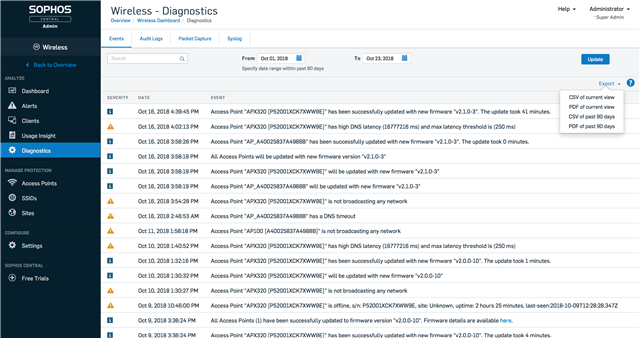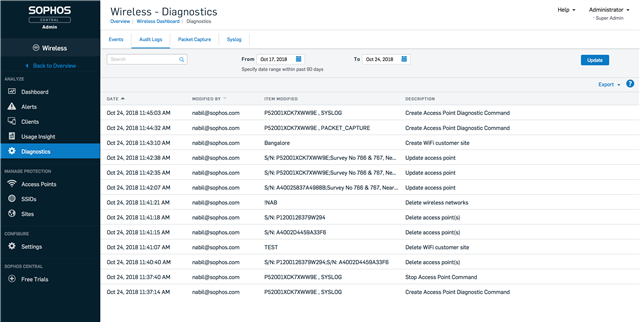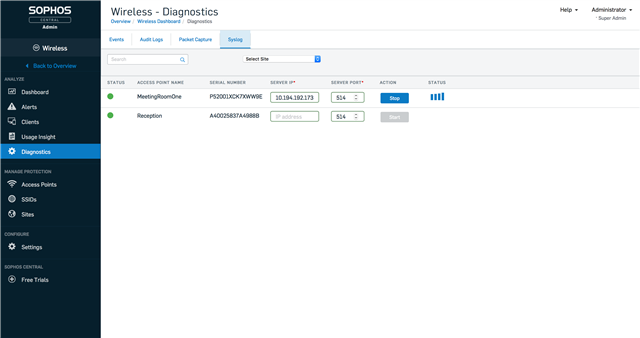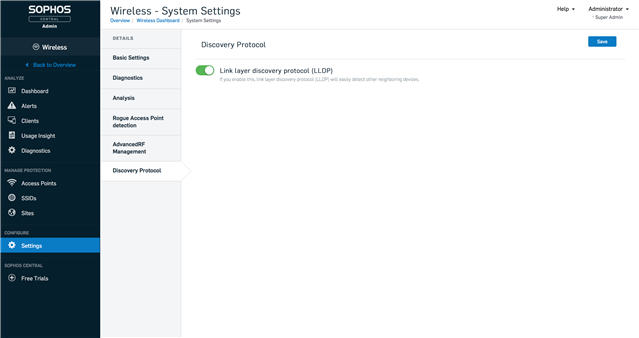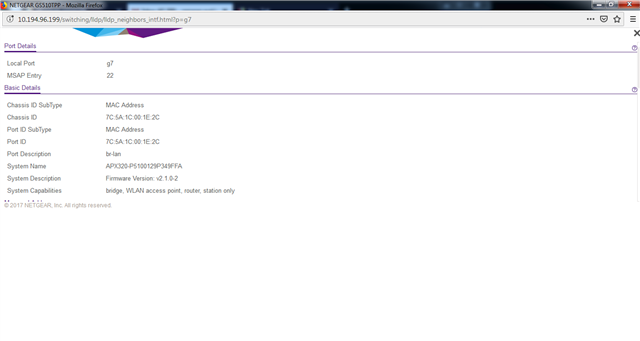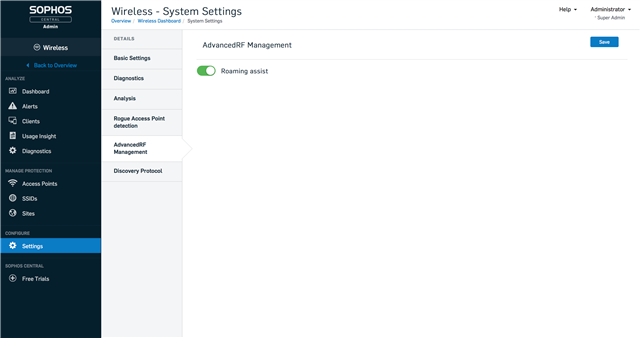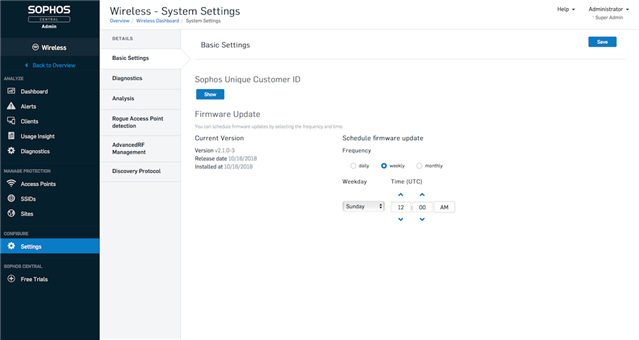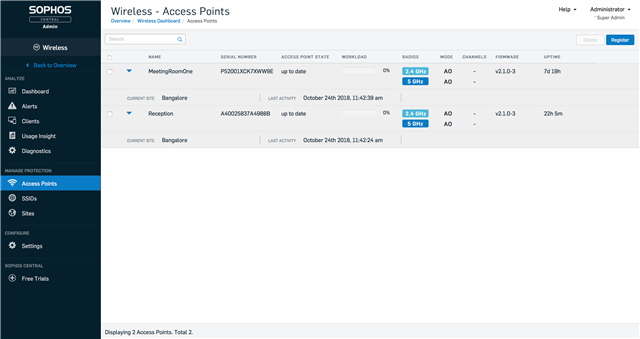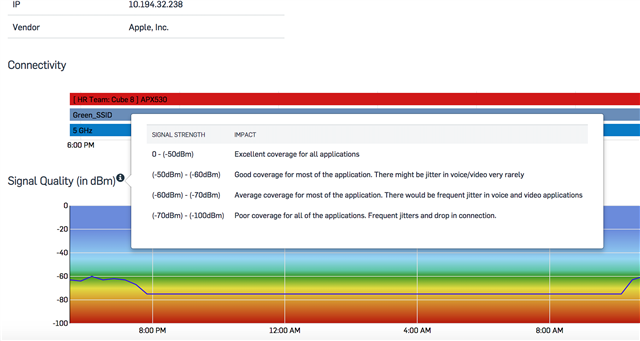Sophos Wireless Update 2.1 (Staged release)
The release v2.1.0-3 brings more visibility to the wireless network with new features such as debugging, accounting, and supportability. It also addresses false alerts and improves wireless client scalability for the Sophos APX Series.
New features
- Wireless Diagnostics : Added to the main navigation, which adds the following features:
- Event logging and reports
- Collecting logs for auditing
- Capturing wireless network packets for troubleshooting
- Collecting system related logs for debugging client connection
Events : You can now refer to a particular event, e.g. APX 320 is not “broadcasting”, and start correlating customer connectivity issues. You can filter events and generate reports. There is an option to export the current event log or for a time period of up to 90 days, in CSV or PDF.
Audit Logs : When an administrator changes a configuration or a setting then the Audit Logs will capture and shown who has changed what and when the change took place. It will list all activities monitored by Sophos Central.
Packet Capture : You can capture wireless packets from remote access points to diagnose and troubleshoot network issues. The access point acts as a distributed sniffer and captures packets on the configured channel and configured channel width from remote access points.
Syslog : You can capture syslog data from access points onto your configured syslog server. You can use the syslog data to debug connection issues. The syslog data can also capture system anomalies over a period of time.
- LLDP - From Nov 17: APX Series access points can now advertise their identity by using link layer discovery protocol (LLDP) Ethernet frames. Network switches that support IEEE 802.1ab LLDP can discover access points. This helps you manage the access point if there is a Layer 2 connectivity issue with the switch. It’s now much simpler to find which port the AP is connected to. The access point advertises :
- MAC Address
- Model
- Serial Number
- Firmware Version
- Management Port
- Management IP Address
Access points send LLDP packets only on the wired interface as a security measure.
Note : Legacy AP Series are not supported.
Screenshot from Netgear Switch which has the data from our APX 320 via LLDP
- Roaming Assist:This feature allows sticky clients to have a more seamless roaming experience without having to disconnect from the network. A sticky client is a client that remains connected to an access point even if it is far away.
- Wireless System Settings UI enhancement : The older page has been decluttered into separate tab menus.
- Basic Settings (Has Sophos Unique CustomerID)
- Diagnostics
- Analysis
- Rogue Access Point Detection
- AdvancedRF Management (Enables Roaming Assist feature)
- Discovery Protocol (Enables LLDP feature)
- Access points page UI enhancement : You can view additional information about access points from a single page.
- Firmware
- Uptime
- Current Site
- Last Activity
- Client signal graph UI enhancement : Signal quality is now available and shown in dBm.
Bug Fixes
|
Issue key |
Summary |
|
CWIFI-9530 |
Multiple events related to “High DNS Latency” is seen on UI |
|
CWIFI-9478 |
False Missing heartbeat alerts generated when clients leaves the AP and comes back |
|
CWIFI-9466 |
AP offline messages should be displayed in the UI with proper contents/information. |
|
CWIFI-9548 |
The existing alerts appears to miss some information like Serial number, site |
Known Issues
|
Issue Key |
Summary |
|
CWIFI-9576 |
Sometimes Mesh doesn't work if there is a lot of delay in getting IP address on root AP. |
|
CWIFI-9473 |
Clients are allowed to associate when mac filter rule is toggled from "allowed" to "blocked" |
|
CWIFI-8821 |
Apply Button Does not work for Voucher End Duration Configuration |
|
CWIFI-9573 |
Cloud allowing to assign more than 8 SSIDs and config also getting pushed |

